Artisanal Scale Gold Mining (ASGM)
To extract and process gold, artisanal and small-scale gold mining (ASGM) employs a variety of methods depending on the ore (e.g. alluvial or hard rock), the tools available to miners, and sometimes other factors beyond miners' control, such as local or regional governance structures.
One method to extract gold from alluvial sources involves dredging waterways, collecting water and sediment, and separating out gold flakes through chemical-free gravity concentration techniques including sluicing, panning, or centrifuges. But it is more common for ASGM miners to use elemental mercury for gold extraction. ASGM is the largest global source of anthropogenic mercury pollution, contributing ~40 percent of all environmental mercury contamination. To extract gold, miners mix gold-containing sediments with liquid mercury in water to form an amalgam. The mercury is not fully recovered during this process. Mercury-contaminated slurry water in ASGM tends to get dumped back into freshwater systems at mining sites. Mercury also enters terrestrial and aquatic ecosystems when it is vaporized over heat when gold is processed.
Mercury is toxic for aquatic organisms and humans. In water, mercury can be transformed by bacteria into methyl mercury, which is more easily absorbed into the bodies of animals and humans than elemental mercury. Once absorbed, methyl mercury can migrate through cells and cross the blood–brain and placental barriers. In humans, mercury contamination leads to neurological and nervous system health issues, and children and pregnant women are particularly vulnerable to mercury poisoning (Mercury Exposure and Children’s Health 2010, World Health Organization 2013).
Mercury bioaccumulates in primary producers (like algae), and can be transferred up the food chain to fish and large predators and people who consume fish. Because fish migrate, mercury-contaminated fish in Peruvian rivers have been found 560 km downstream from ASGM sites (Hance 2015). Mercury disrupts vertebrate neurological and hormonal systems, causing a variety of negative outcomes including smaller egg size in waterfowl, slow response times to predators, and changes in reproductive behavior because it disrupts hormones in the endocrine system; all of these effects can lead to decreased birth rates and increased death rates (Kessler 2013). According to the World Health Organization, people living near ASGM sites are exposed to mercury concentrations up to ten times the international standard through vaporized mercury and environmental deposits.
ASGM miners might also use cyanide leaching to extract gold. While this practice is considered relatively safer than extraction with liquid mercury, cyanide leaching can also pose dangers to humans and wildlife. In some cases, cyanide leaching is used in conjunction with mercury amalgamation because cyanide dissolves mercury. When the cyanide and mercury mixture is released into the environment, it binds with organic molecules and becomes methyl mercury (USAID 2017).
In addition, ASGM in rainforest ecosystems like the Amazon Basin leads to the removal of all forest species and the organic soil layers underlying them as alluvial soils beneath the forest contain “diffusely distributed gold deposits” (Asner 2016).
Guiding questions for innovation
The Minamata Convention calls for mercury-free mining techniques. What are these, and how can they get adopted in the field for long-term use by the ASGM miners?
What cost-effective tools will allow people, researchers, local health officials, miners, etc. to measure and respond to high levels of environmental mercury or other heavy metals that enter waterways as a result of mining?
How can gold be mined with little to no habitat loss, biodiversity loss, and water contamination?
What incentivizes actors along the ASGM supply chain to prevent or reverse large-scale habitat loss?
How can gold be mined without harming ASGM miners and surrounding communities?
How can manufacturers and brands know if mercury was used to extract gold in their supply chain?
Can gold be traced from mine to product? If gold is traceable, how does that knowledge lead to improved outcomes for ASGM miners and the environment
Need some inspiration?
We realize that it isn’t always obvious to innovators outside of their fields to see the application of their technology in ASM. We’ve identified some technologies where we see ASM use-cases for existing technologies. These are suggestions and do not indicate any preference of the Challenge administrators or judges; nor is this list meant to be exhaustive. These suggestions are provided to give innovators some ideas on where there might be application for these techniques. Ideally applicants read this list, become inspired, and come up with their own ideas on how to apply their innovations to solve the ASM problems described above.
Restoration and remediation programs such as those demonstrated by some of the Grand Challenge coalition members:
CINICA in Peru
Mercury and heavy metal sensors using advanced techniques such as:
absorption and fluorescence spectroscopy;
hyperspectral imaging;
resonant frequency lidar;
electronic sensors using field-effect transistors; and,
nanotextured metal-films detecting surface plasmon resonance.
Environmentally-friendly solvents and reagents that eliminate the need for mercury amalgamation.
Earth observation techniques from satellites or drones and corresponding data analysis to detect deforestation or predict the movement of ASM miners to new areas.
